No event invites us to journey in our imagination to more far-flung lands – or attempts to interpret what we find there more engagingly – than Parcours des Mondes (10–15 September). This annual dealers’ initiative, staged in the galleries of Saint-Germain-des-Prés in Paris, has evolved into the most important art show of its kind in the world. The reason is straightforward: just about all of the most respected dealers in the field exhibit here, with many choosing this moment to publish new material or present thematic shows that have been long in the making.
Over the course of its 18 years, Parcours’ horizons have continued to broaden – from Africa, Oceania and the Americas to the continent of Asia; this year sees an influx of new participants shedding light on the origins of European civilisation. Objects from the ancient Mediterranean can be as enigmatic as anything from a distant continent.
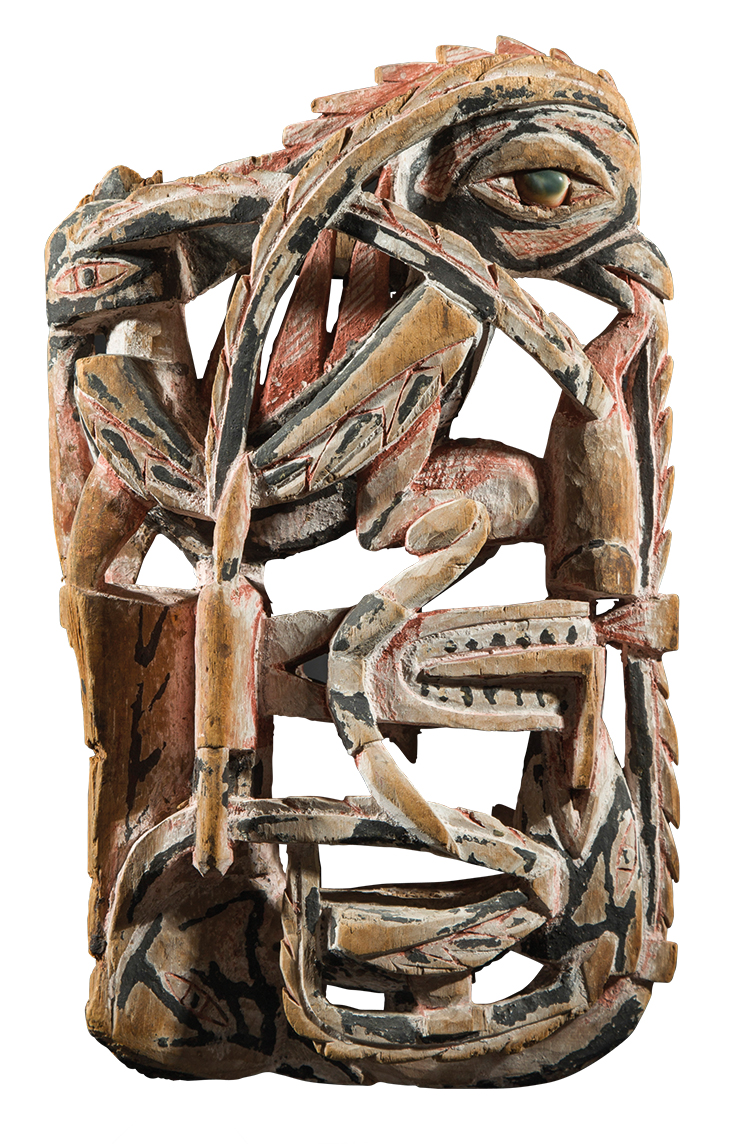
Canoe prow (19th century), New Ireland, Bismarck Archipelago. Galerie Flak (price on application). Photo: D. Voirin; courtesy Galerie Flak
Although Parcours is a fair in all but name, it has more the atmosphere of a festival, as people and conversations spill out of the gallery spaces clustered around the rue Jacques Callot on to the streets and into the neighbourhood cafés (participating galleries are easily identified by orange flags and pavement markers, and the Parcours handbook carries a map). This street life is part of the charm of the event for both serious collectors and the simply curious, but what really makes it rewarding are the interactions between some of the most passionate dealers in the world and those who come in to see their exhibitions.
This year’s iteration promises a number of engaging thematic shows and outstanding objects. For example, Galerie Flak (8 rue des Beaux-Arts) has been preparing and dreaming of its show ‘Furious Beauty: Ancient Arts of New Ireland’ for more than a decade. New Ireland is part of the Bismarck Archipelago in Papua New Guinea. In the famous 1929 map attributed to Paul Éluard , the archipelago sat at the centre of the Surrealist world: small wonder when you see the imagery of the extraordinarily inventive polychrome carvings of its peoples.
Included here are some 20 major pieces – from tatanua, kepong and matua masks to malagan effigies and architectural lintels. Many were collected in the 19th century and have German museum provenances, while others passed through the hands of major collectors such as the Vérité family, Jacques Kerchache, Loed van Bussel and Arthur Speyer. Of almost Celtic complexity is an openwork canoe prow collected by Captain Frederick Mann (who arrived on HMS Nelson) in 1894, all interlaced bird, snake, jaws and eyes. Prices range from €4,000 for clubs, pendants and ornaments to around €100,000 for the most elaborate sculptures.
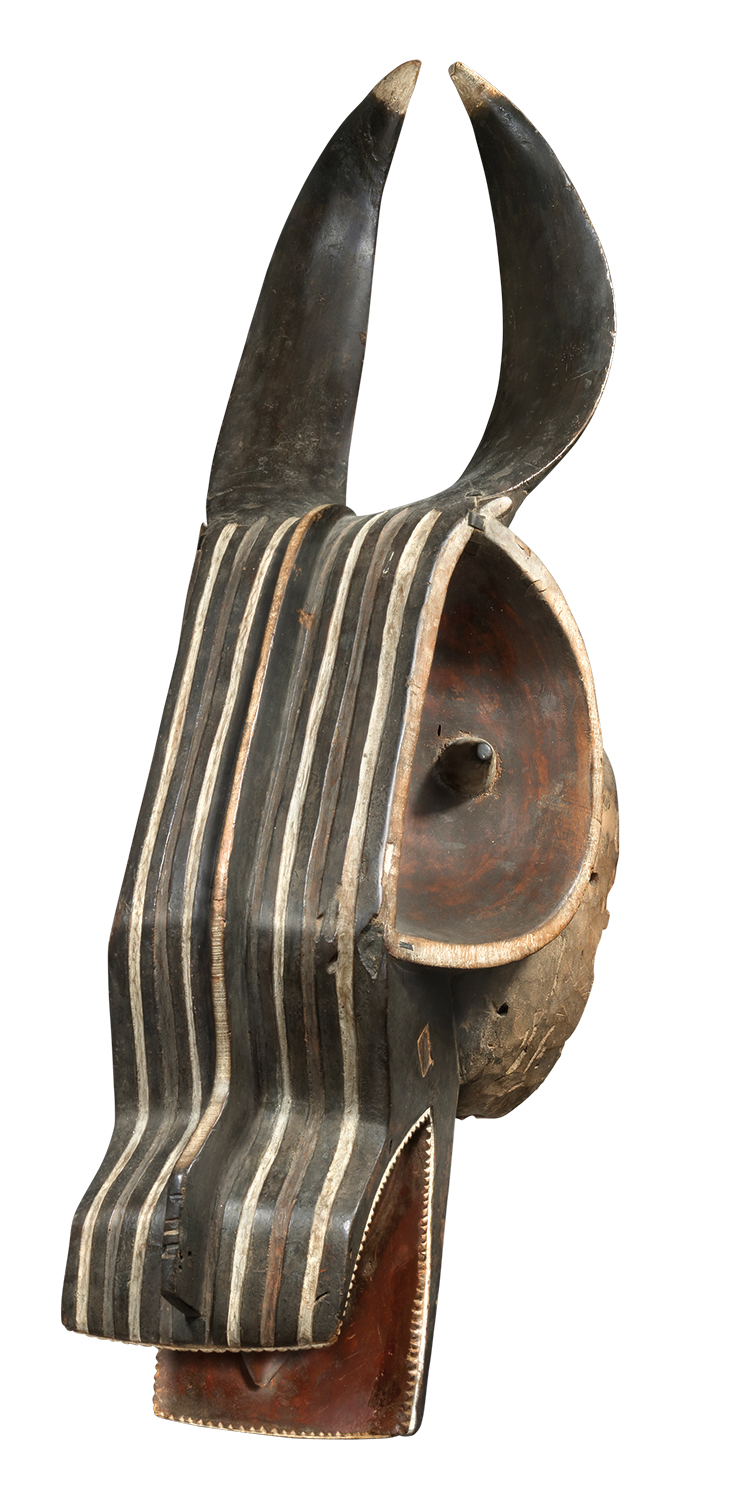
Goli glen mask (early 20th century), Baule people, Ivory Coast. Galerie Laurent Dodier (around €25,000)
London-based Finch & Co (installed for the event at 10 rue des Beaux-Arts) present a quite different piece from central New Ireland, an extremely rare limestone kulap, or funerary figure, representing a male ancestor. Such pieces served as temporary homes for the spirits of the dead that might otherwise wander and cause havoc among the living, and appear to have been ritually broken and discarded once the period of mourning was over and the spirit could then be released into the realm of the ancestors. This 19th-century example, with traces of original stippled ornament, bears repairs to the waist consistent with ritual use (£17,500).
Galerie Laurent Dodier from Normandy flourishes ‘Les Grands Fauves’ (17 rue des Beaux-Arts). Buffalo, hyena, chameleon, crocodile and warthog are among the beasts evoked by 15 large zoomorphic dance masks, mostly West African. Perhaps most striking to the Western eye is the highly stylised goli glen mask made by the Baule people of the Ivory Coast, dated to the early 20th century. Its toothed open mouth extends from a wide nasal crest striped red, black and white. Either side are two concave cheeks decorated with eyes rendered in relief, and from the top of the head rise two wide and flat curving horns. The space will be a veritable menagerie, with the host gallery, Galerie Meyer, contributing zoomorphic Oceanic and Inuit pieces.
While the influence of tribal art on Western modernism is a well-told story, its inspiration for contemporary artists is less often discussed. Bernard Dulon (10 rue Jacques Callot) brings together the work of the Belgian Jan Calmeyn (b. 1942) with the sculptor’s parallel collection of African art, and the dialogue is revealing. His angular bronze constructions share the linearity and sense of precarious balance found in the likes of a seated figurine made by the Dogon people of Mali and an extraordinary – and exceedingly rare – Lega figurine in the shape of a zigzag from the Congo basin.
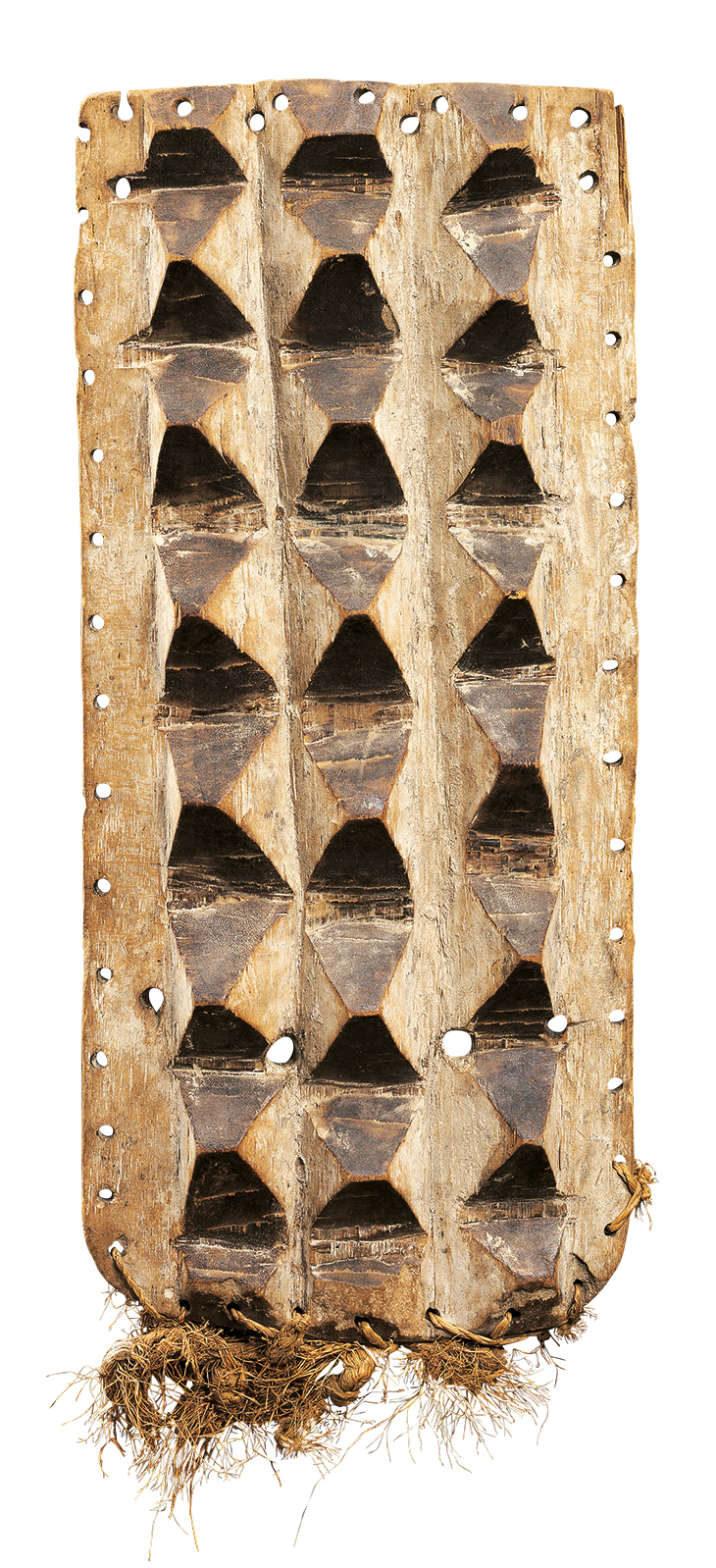
Mask (early 20th century), Koro people, Nigeria. Dandrieu-Giovagnoni (price on application)
Dandrieu-Giovagnoni’s show ‘The Spirit of Geometry’ (8 rue des Beaux-Arts) is an African homage to the square – and the rectangle, circle, lozenge and triangle. This selection includes masks, figures and utilitarian objects that might almost be modernist or contemporary art, not least the elegant Yoruba torque (€10,000) and the 80cm-high Koro mask from Nigeria, decorated with ochre and brown diamond shapes (price on request).
A distinctive geometry marks the powerful carved wood tiki figure from the French Polynesian Marquesas Islands, which, despite being collected by the American missionaries Richard and Clarissa Armstrong in 1833–34, makes its market debut only now courtesy of Michael Hamson, who acquired it from their great-great-grandson earlier this year (5 rue Jacques Callot). These characteristically huge-eyed anthropomorphic figures represent atua, or gods (price on application).
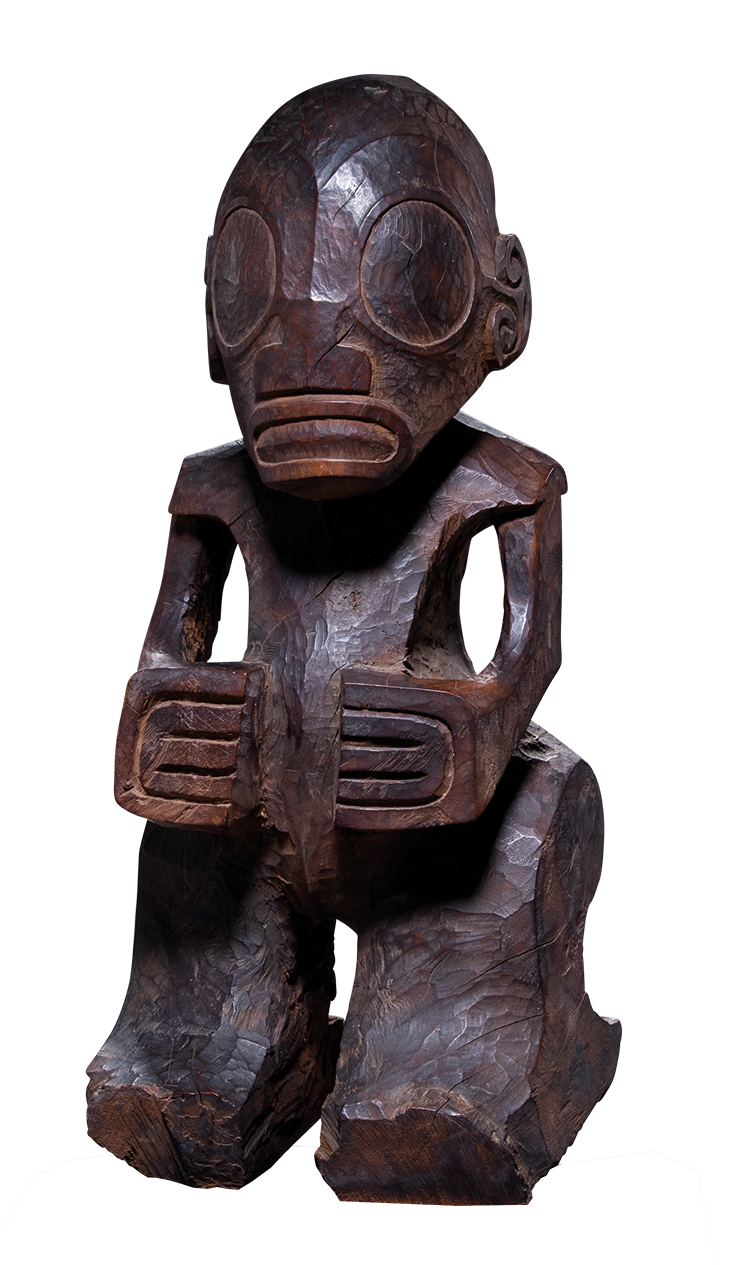
Tiki figure (late 18th century), Marquesas Islands. Michael Hamson (price on application). Photo: Aaron Fallon
A newcomer last year was Eastern arms and armour dealer Runjeet Singh, who returns with armour from the Yi people of south-west China and a group of items relating to the famous Indian ruler Tipu Sultan. Making their debut this year are seven antiquities dealers: Alexander Ancient Art, Arteas Ltd, Cahn Contemporary, Galerie Eberwein, Galerie L’Ibis, J. Bagot Arqueología and Galerie Tarantino. Laying claim to one of the oldest objects on display is Cahn Contemporary,which offers a monumental Greek Geometric Period olla – an ovoid clay vessel without handles – dating to the early 7th century BC. It stands around 47cm high, and its sides are decorated with hunting scenes, with typical triangular-bodied and stick-armed men wielding spears alongside grazing or running wild goats and an assortment of more or less decipherable symbols (€50,000–€60,000). These objects bear witness to the fact that cultures across the history of time essentially address the same human imperatives and concerns. As this year’s honorary president of Parcours, Kyveli Alexiou, succinctly expressed it: ‘We all seem so different but we are so alike.’
Parcours des Mondes takes place in the galleries around Saint-German des-Prés, Paris, from 10–15 September.
From the July/August 2019 issue of Apollo. Preview the current issue and subscribe here.
Unlimited access from just $16 every 3 months
Subscribe to get unlimited and exclusive access to the top art stories, interviews and exhibition reviews.

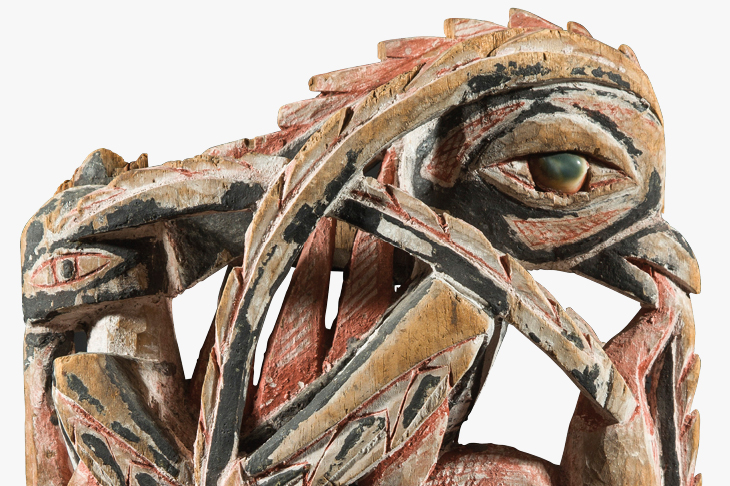
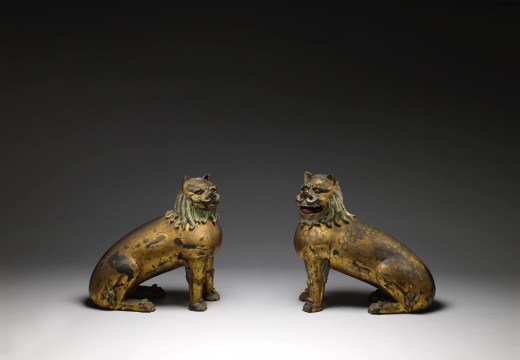
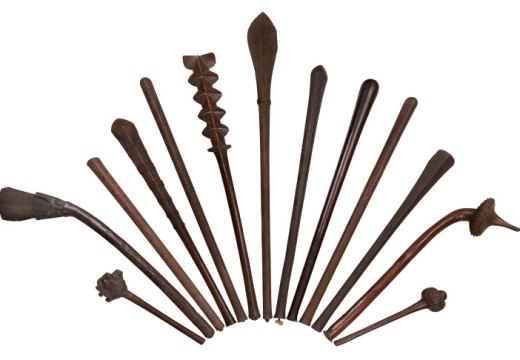
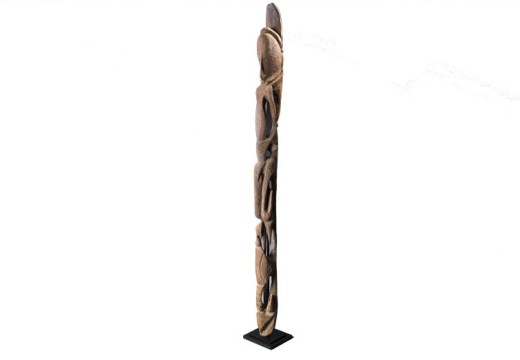









![Masterpiece [Re]discovery 2022. Photo: Ben Fisher Photography, courtesy of Masterpiece London](http://www.apollo-magazine.com/wp-content/uploads/2022/07/MPL2022_4263.jpg)
It’s time for the government of London to return to its rightful home